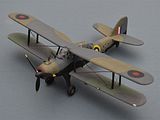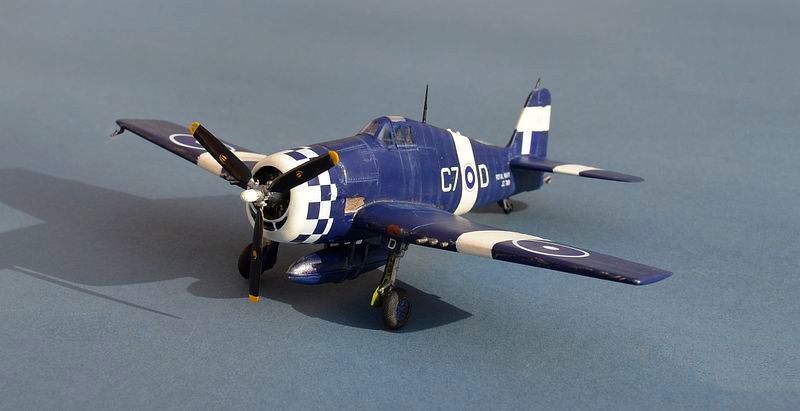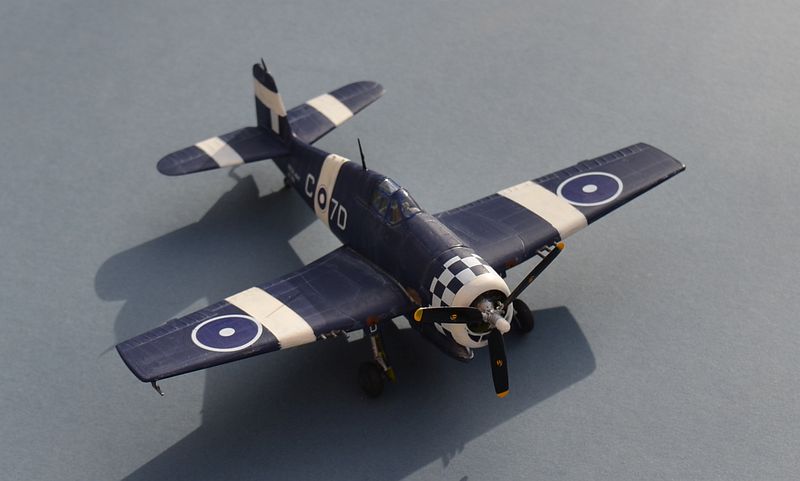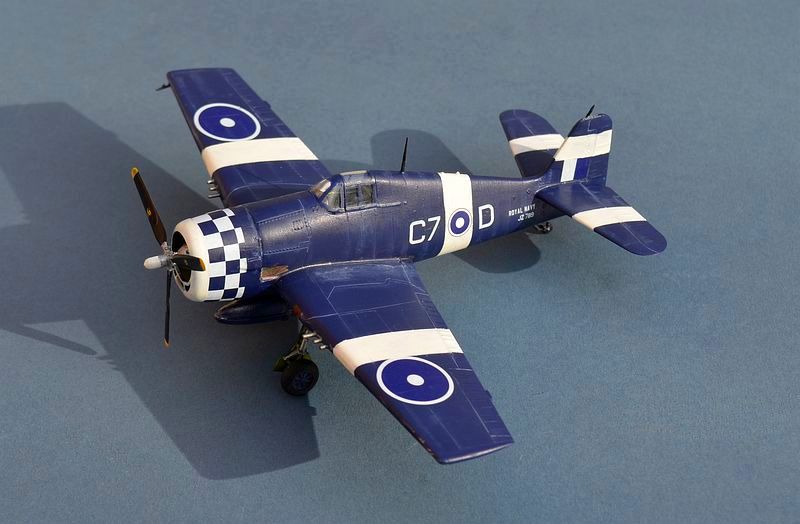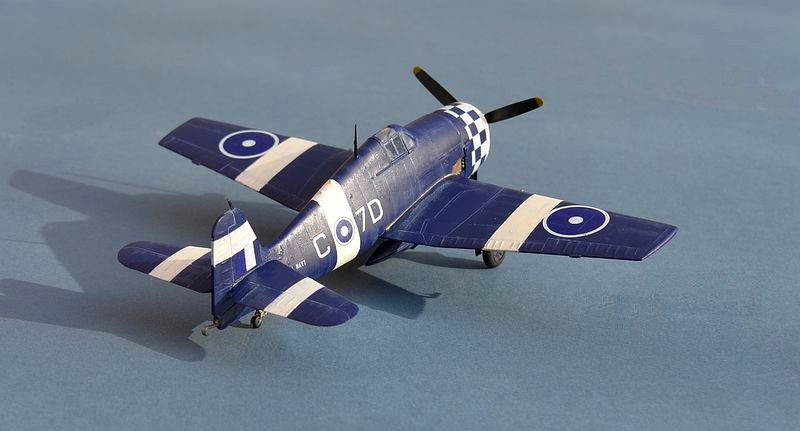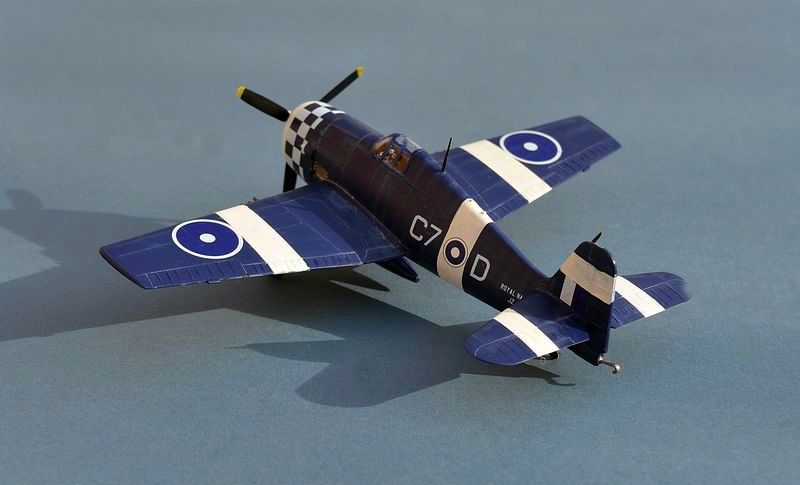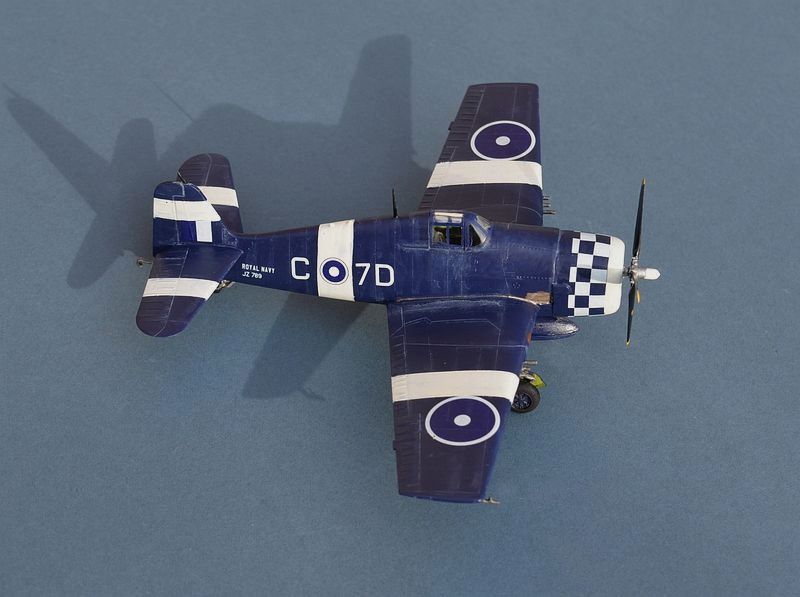March 2024
Grumman Hellcat Mk.II
Grumman Hellcat Mk.II
808 Sqn Fleet Air Arm
HMS KHEDIVE / RNAS Trincomalee 1945/46
Academy 1/72 with Freightdog decals
Text & Images © www.gengriz.co.uk
Grumman developed the F-
Initially, in RN service Hellcats were known as the “Gannet” but this was quickly
dropped for the US Hellcats nomenclature. Supplied from early 1943 until the end
of the war, mainly under Lend-
Aircraft of the British Eastern, East Indies and Pacific Fleets wore a wide range of markings, all intended to prevent confusion with Japanese red markings.
Initially these simply removed the red centre to the normal roundel, but became increasingly complex, including white stripes on nose, tail and wings. To further aid recognition, the British Pacific Fleet also adopted a US style white bar as well.
A great aircraft in every way; sadly, at the end of the war, almost all of the FAA's
Hellcats were dumped at sea as a condition of Lease-
The aircraft represented flew with 808 Squadron onboard British Eastern Fleet Escort Carrier HMS KHEDIVE and is depicted as seen at the RN Air Station Trincomalee, Ceylon (now Sri Lanka) immediately after the war.
808 Squadron flew the Fairey Fulmar from RNAS Wick to protect the Fleet Anchorage
at Scapa Flow during the Battle of Britain, then transferred to HMS ARK ROYAL as
part of Mediterranean Force H, seeing combat over Sicily, Malta and Sardinia, participating
in the hunt for the Bismark. After the 1941 sinking of HMS ARK ROYAL, they transferred
to Escort Carriers, covering the Salerno Landings. After a short period with Seafires
and Spitfires as gunnery spotters for the D-
Link to many more RN aircraft on my Flight Deck pages

Building the Academy F-
I've built quite a few Hellcats, from many different kit manufacturers. Eduard seem
to be the one held in highest regard, with Hasegawa and Italeri following closely.
This Academy kit certainly looks great in the box and came at a very reasonable
price, yet it doesn't seem to have the same levels of visibility as its Czech and
Japanese equivalents. There is some suggestion that it is based on the Hasegawa kit,
and there are certainly some surprising similarities in layout. 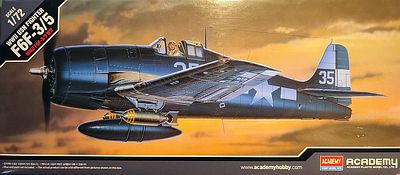
Assembly went well; one of the things I like about Academy kits is their relative
simplicity of design and the fact that parts actually fit! The cockpit comes with
some very nice separate side-
The wheel wells are deep and at least partly textured. There are quite a lot of
ejector tower marks on the mould, but most of them are well hidden once assembled.
I had to trim one wing joint to get it to fit -
Paint is mainly Humbrol 104 Enamel, with two coats to provide even coverage, plus Humbrol 130 White for the detail parts. Kit decals are all for US Navy aircraft, so I have used the Freightdog “Brits at Sea” set for a set of relatively fancy markings for an aircraft of 808 Sqn just after WW2 ended. I can’t find out much more about this particular airframe, but the chequered cowl markings suggest to me that it is either a wing or squadron leader’s aircraft.
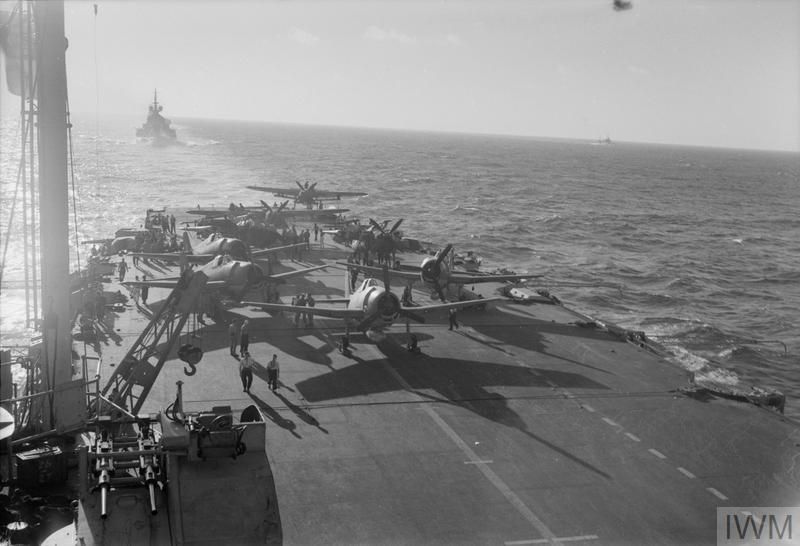
BEF Hellcats onboard HMS INDOMITABLE © IWM A 25559
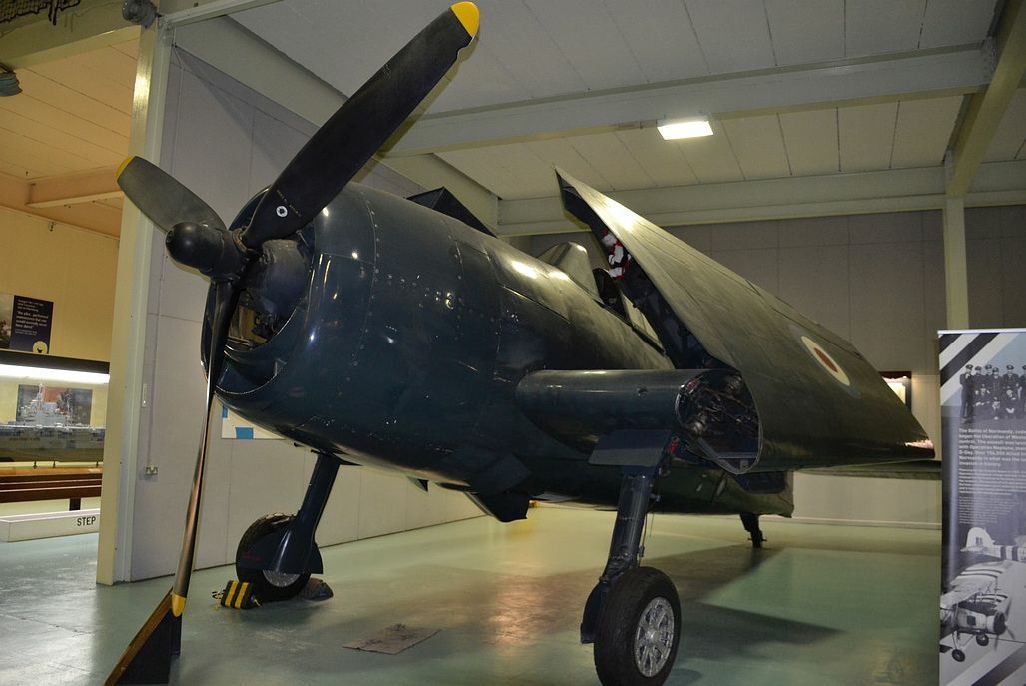
Hellcats are very rare outside the USA. This one is a former Royal Navy Aircraft at the Fleet Air Arm Museum at RNAS Yeovilton.
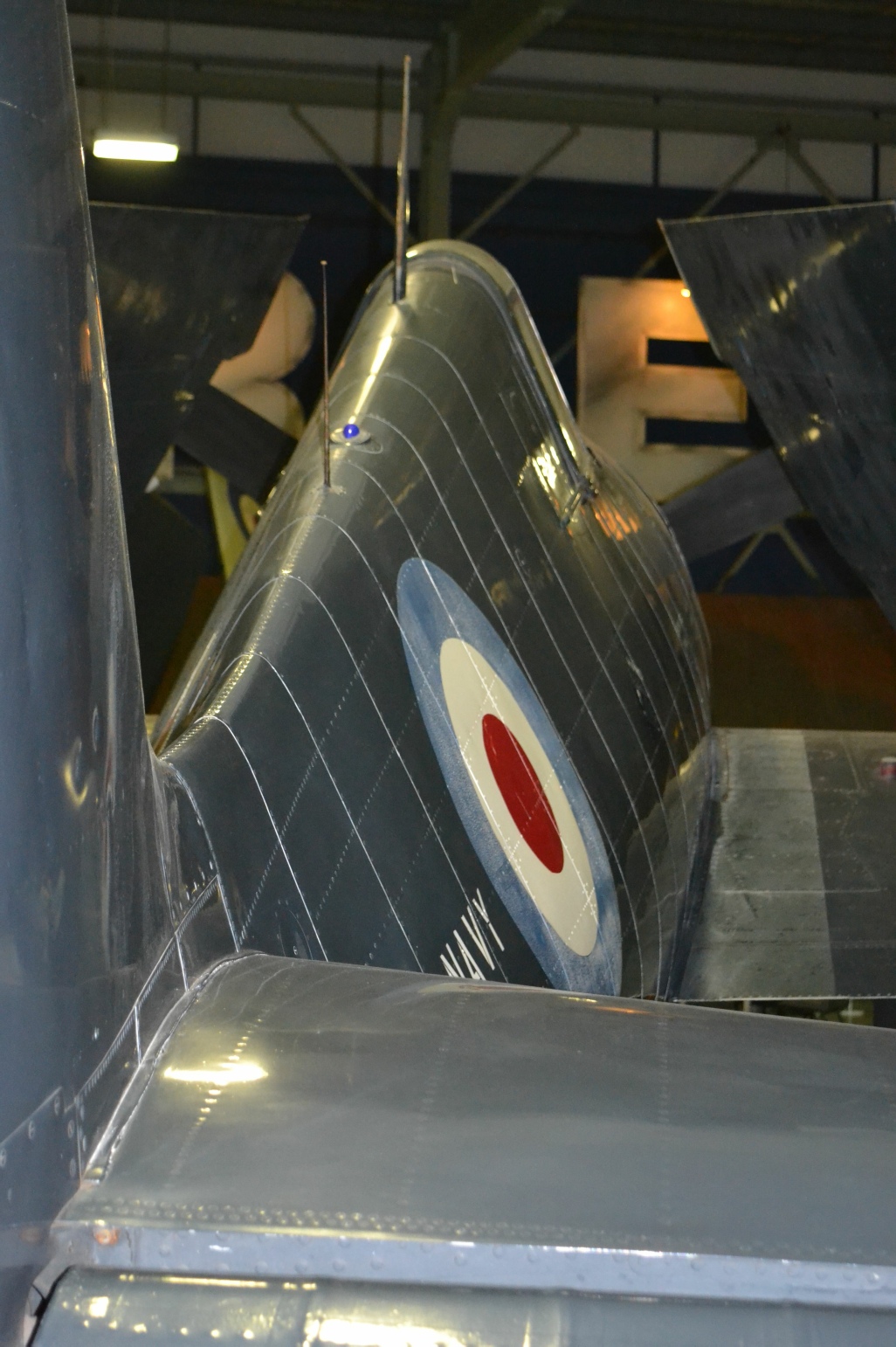
A view from astern shows just how sharp and straight the Hellcat’s fuselage top is.
Part 1
